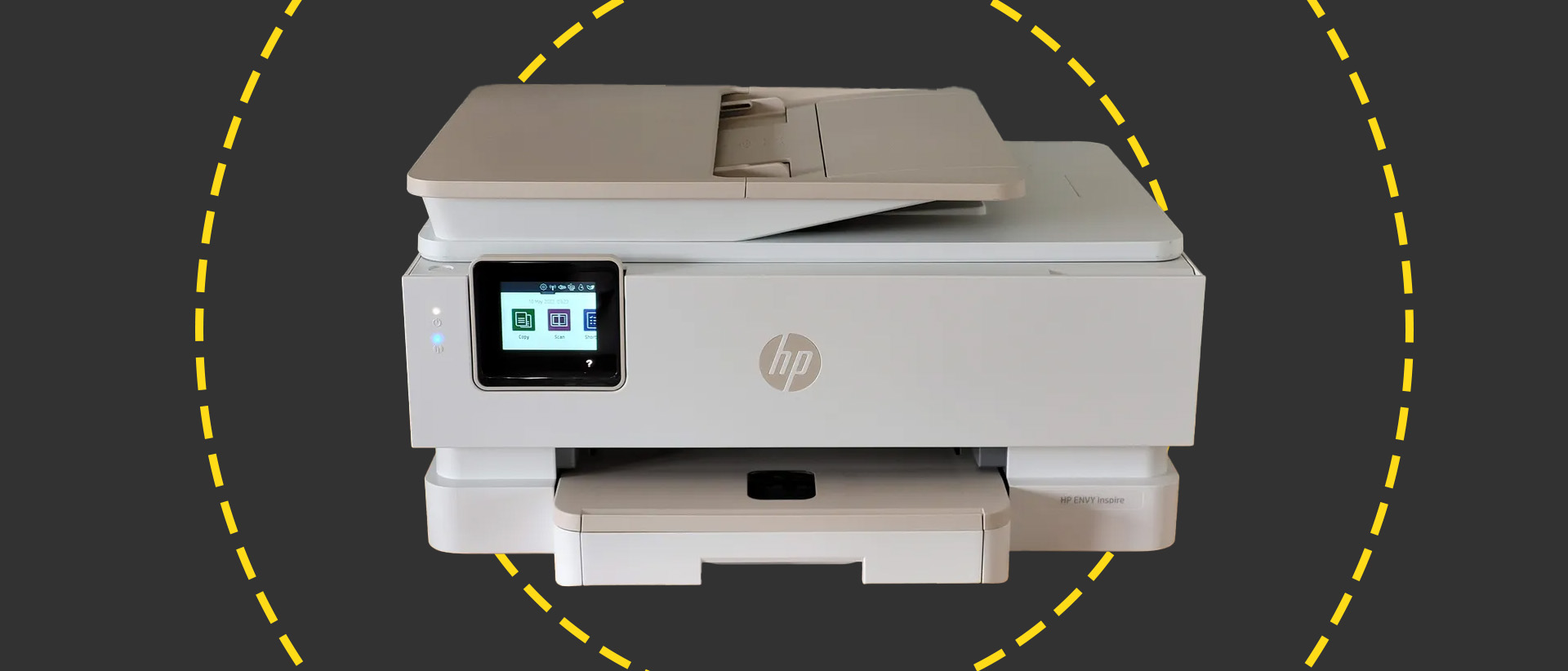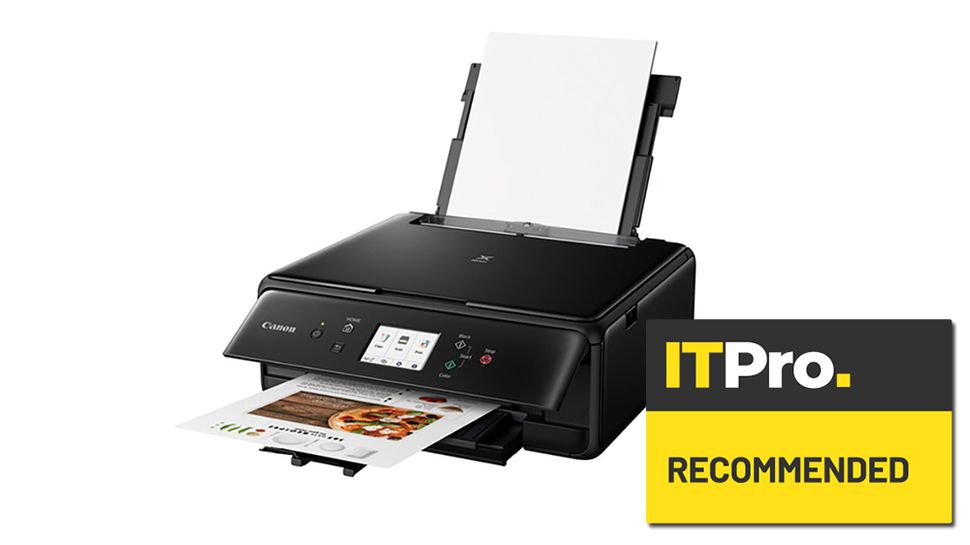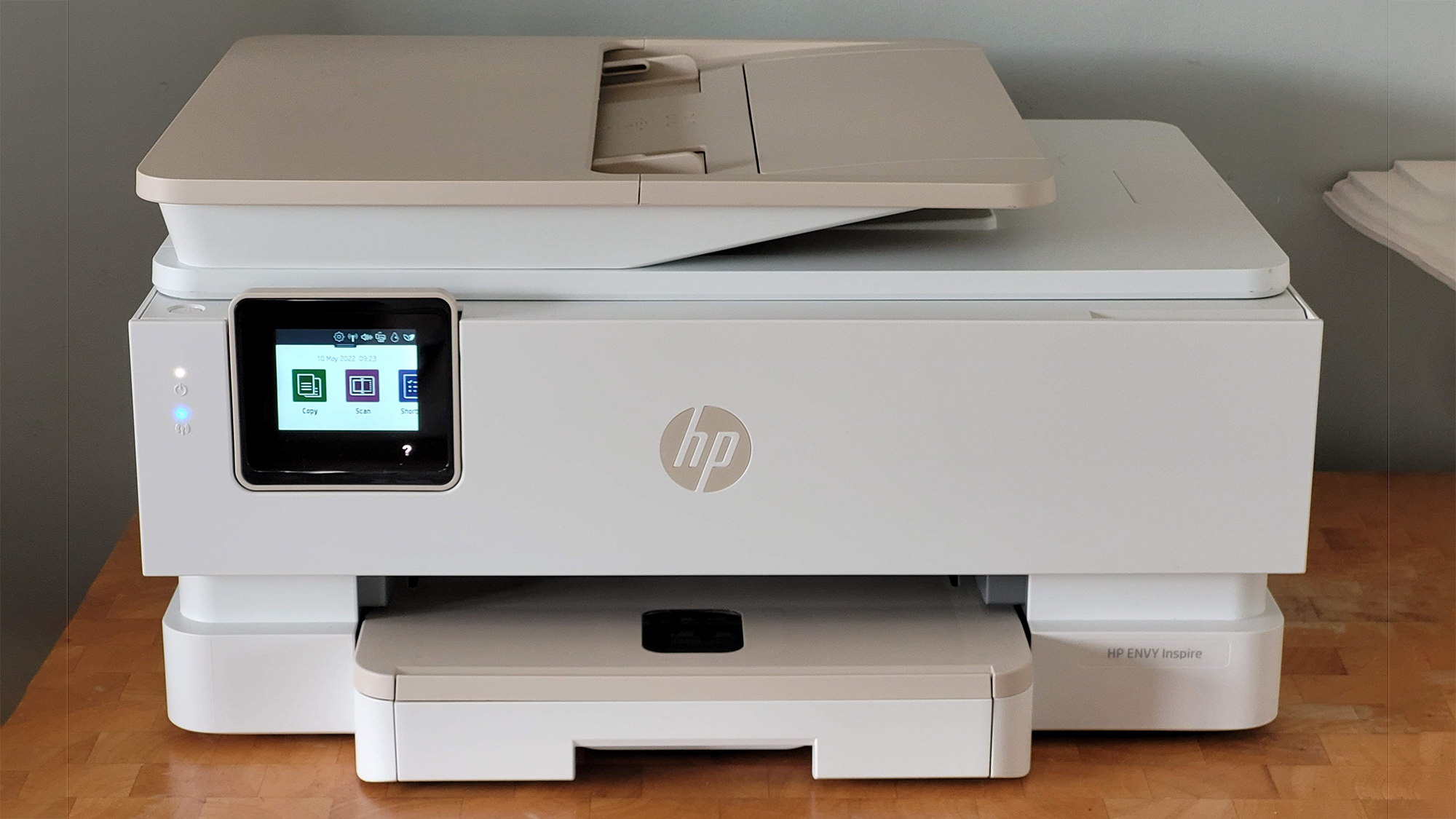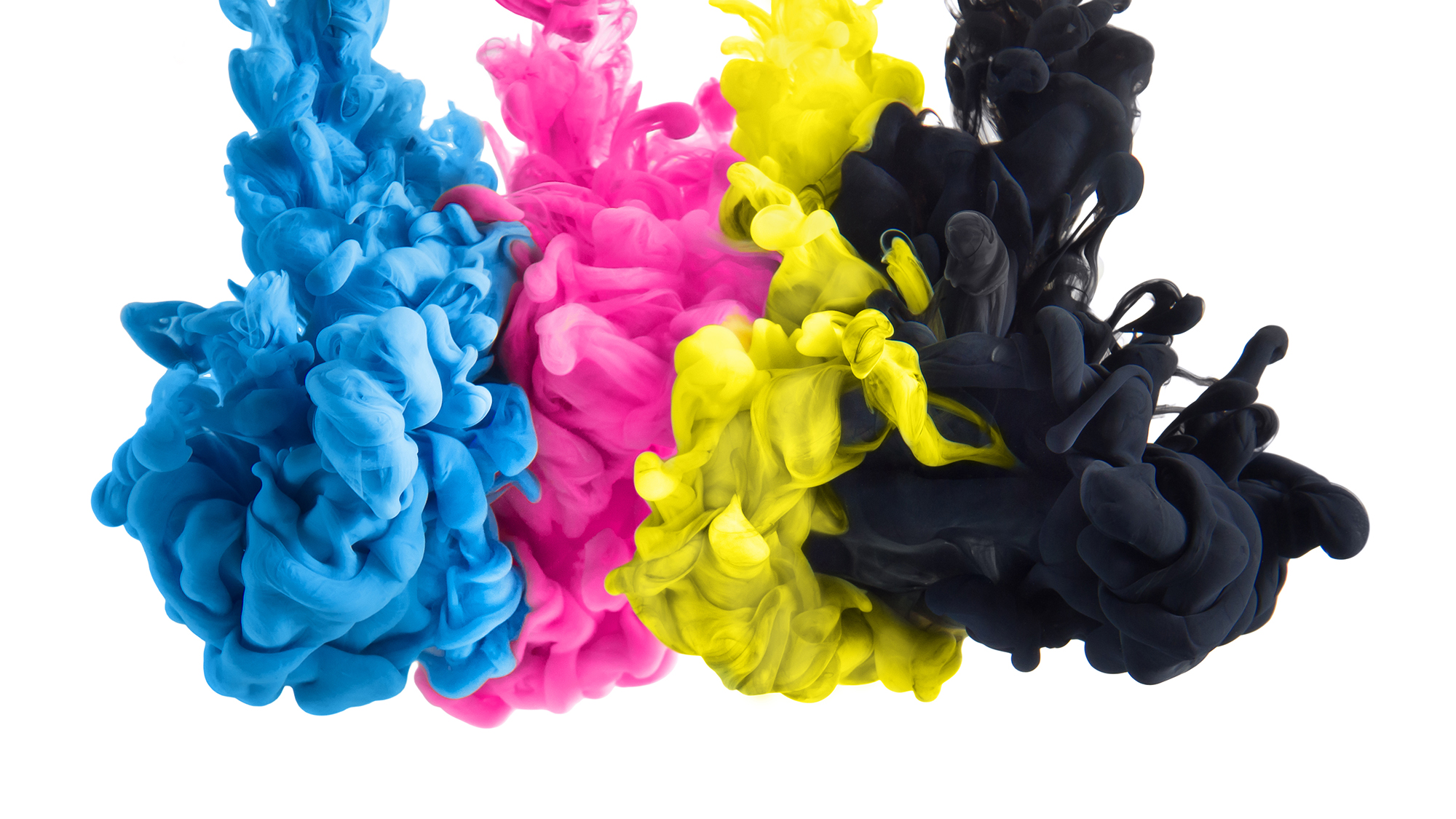HP Envy Inspire 7920e review: The answer to your home office paperwork
Ignore the average speeds, and this flexible MFP has a lot to offer the home office

-
+
Home-office friendly design
-
+
35-sheet ADF
-
+
Quiet printing and good paper handling
-
+
Professional results
-
-
Unimpressive speeds

The HP Envy Inspire 7920e will look very familiar to anyone who has seen or used anything from the HP Inspire series – in particular, the HP Envy 7224e, which bears an almost identical design. However, there is one clear addition here, in that it has a 35-page auto-document feeder above the A4 flatbed scanner.
READ MORE

The Inspire 7224e was far from perfect, but it had the feel of a machine that was designed by teams that had clearly spent time in a home office; its ease of use, its unobtrusive style, and the simplicity of its maintenance tools. On first impression, the same is true of the 7920e, though it is further enhanced with more scope for multi-page scanning and copying.
However, at 46cm wide and 38cm deep, the HP Envy Inspire 7920e is hardly compact. The two-tone off-white and beige color scheme does a considerable job of making it blend into its surroundings, though any walls that clash will emphasize the printer's bulk. However, it's worth pointing out that size works in its favor; the build quality is solid, and that is particularly notable for a relatively inexpensive machine.
HP Envy Inspire 7224e review: Performance
The 7920e has a maximum monthly duty cycle of 1000 pages, and HP states the target use case is a small team of under 5 people printing roughly 400 pages a month. In that case, the 125-sheet main input tray should be perfectly adequate, while there’s space for envelopes, cards, and photo paper in the secondary tray above. This strictly takes 6x4 and 5x7in photo sheets – we couldn’t get A5 photo paper to print correctly from either tray. All the same, for home office purposes, you’ll spend most of your time printing A4 documents, anyway.
The controls are minimal, with most operations covered through the 2.7in touchscreen, which helpfully tilts upwards so that you don’t need to crouch down just to see what’s going on. Here you’ll find basic settings, black-and-white and colour photocopying and shortcuts to scan to a specific device. All setup and configuration, meanwhile, happens through the HP Smart smartphone app.
This does an excellent job of setup, connecting to a network, inserting the paper and ink cartridges and running through the hassle-free alignment process. Once that’s done, you can print straight from your smartphone or tablet, the macOS or Windows companion app, or simply use the standard Windows driver, which gets installed when Windows 10 or 11 picks up the printer automatically.
Needless to say, there’s pressure during setup to sign up for HP’s HP+ and Instant Ink services, with warnings to stick to the safe path of official HP supplies rather than using third-party ink cartridges, but you can skip through if you’d rather avoid any such subscription, even if it’s arguably the smarter way to run this printer.
Print speeds are, unsurprisingly, on a par with the 7224e, meaning they’re decent rather than fast. The first page of our 24-page black and white text document arrived in 18 seconds, with subsequent pages coming through at a speed of 12.3ppm. Dropping down to draft quality boosted that to 16 seconds and 12.5ppm. The first page of a coloured document with a mix of text and business graphics took 25 seconds to hit the output tray, with the remaining pages appearing at a rate of 3.5ppm.

The 7920e also supports duplex printing, at speeds of roughly 7ppm, and has the same Quiet mode as the 7224e. This adjusts the print engine to lower the noise output, and while the reduction isn’t huge, it’s focused on the noises and pitches that are most likely to disturb other people. That might be crucial in a home environment where other people are trying to sleep or work – and could even be very useful in the average office.
Text quality is excellent on the better and best quality settings and passable even on draft. The 7920e also does a fine job with business graphics; they look crisp and well-defined, with smooth graduated fills and accurate colours.
The 7920e also does a better job of photo printing than you might expect from an office device. Despite having a fairly ordinary four-colour, 1200dpi print engine, photos have natural-looking colours, good levels of detail and no noticeable banding or colour smearing issues, particularly on photo paper. You can’t get borderless printing, weirdly, when you have photo paper selected in the secondary input tray, but all in all you get a good result from something that’s clearly not a specialist printer – certainly good enough for business or casual personal use. Just be prepared to wait. Even a 6x4in photo took 96 seconds to emerge, while a full-colour, A4 photo test sheet took 3 minutes and 25 seconds to print.
READ MORE

However, the 7920e’s real strength isn’t its performance or its print quality, but the flexible document handling you get from its scanning and copying features. You’re looking at 15 seconds for a single black-and-white copy and 24 seconds for colour, but load up the ADF and it’ll copy at 6.3ppm (black and white) or 3.3ppm (colour), or scan a 9-page black and white text document at 6.4ppm. You can also set it to copy documents through the ADF and print them double-sided, reducing a 24-page report, for instance, down to just 12 sheets of paper. Combine that with customisable shortcuts, which you can set up through the app, and you’ve got a really flexible device, which you can set to, say, scan a multi-page report and email it to your team at the tap of a button on the touchscreen.
HP Envy Inspire 7224e review: is it worth it?
The first stumbling block for the HP Envy Inspire 7224e is print costs: For a set of 303XL black and color cartridges – what you would use for roughly 600 black and white pages – you can expect to pay $65 (£52) which is particularly expensive compared to some bottle-fed office inkjets, such as the Epson EcoTank ET-3850. This is probably why HP would prefer you to sign up for its HP+ subscription with Instant Ink. With this, you can opt-in for the 300-page per month subscription, which is $9.99 (£9.99) per month. It would still, however, be significantly cheaper in the long run, to buy the Canon Maxify GX70505, or the Canon Pixma G7050 – particularly if you're printing high volumes.
The Envy Inspire 7920e isn't a particularly speedy printer and with its high running costs, it might not be the best option for the office. It is, therefore, more of a home office buddy, one that can offer scanning and sharing capabilities too. However, even with those considerations, we recommend pairing it with the HP+ and Instant Ink subscriptions.
It is a well-built and neatly designed printer, capable of delivering reliable and professional results, but we suggest checking out other bottle-fed models to see what you'll be spending over the long term.
HP Envy Inspire 7224e specifications
| Format | 1,200 x 1,200dpi A4 inkjet MFP, 1,200 x 1,200dpi flatbed A4 scanner |
| Print speed | Up to 15/10ppm mono/colour |
| Display | 6.75cm LED TFT touchscreen |
| Networking | 802.11ac |
| Connectivity | USB |
| Print type | Duplex |
| Tray size | 125-sheet input tray, 15-sheet photo tray, 35-sheet ADF |
| Recommended monthly duty cycle | 300-400 pages |
| Dimensions | 460 x 511 x 233mm |
| Weight | 8.12kg |
| Warranty | 1yr RTB |
Get the ITPro daily newsletter
Sign up today and you will receive a free copy of our Future Focus 2025 report - the leading guidance on AI, cybersecurity and other IT challenges as per 700+ senior executives
Stuart has been writing about technology for over 25 years, focusing on PC hardware, enterprise technology, education tech, cloud services and video games. Along the way he’s worked extensively with Windows, MacOS, Linux, Android and Chrome OS devices, and tested everything from laptops to laser printers, graphics cards to gaming headsets.
He’s then written about all this stuff – and more – for outlets, including PC Pro, IT Pro, Expert Reviews and The Sunday Times. He’s also written and edited books on Windows, video games and Scratch programming for younger coders. When he’s not fiddling with tech or playing games, you’ll find him working in the garden, walking, reading or watching films.
You can follow Stuart on Twitter at @SATAndrews.
-
 Cleo attack victim list grows as Hertz confirms customer data stolen – and security experts say it won't be the last
Cleo attack victim list grows as Hertz confirms customer data stolen – and security experts say it won't be the lastNews Hertz has confirmed it suffered a data breach as a result of the Cleo zero-day vulnerability in late 2024, with the car rental giant warning that customer data was stolen.
By Ross Kelly Published
-
 Women show more team spirit when it comes to cybersecurity, yet they're still missing out on opportunities
Women show more team spirit when it comes to cybersecurity, yet they're still missing out on opportunitiesNews While they're more likely to believe that responsibility should be shared, women are less likely to get the necessary training
By Emma Woollacott Published
-
 OpenAI wants developers using its new GPT-4.1 models – but how do they compare to Claude and Gemini on coding tasks?
OpenAI wants developers using its new GPT-4.1 models – but how do they compare to Claude and Gemini on coding tasks?News OpenAI says its GPT-4.1 model family offers sizable improvements for coding, but tests show competitors still outperform it in key areas.
By Ross Kelly Published